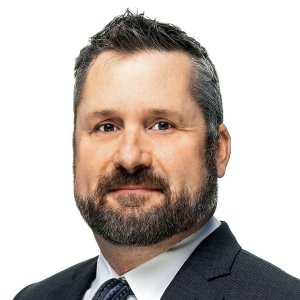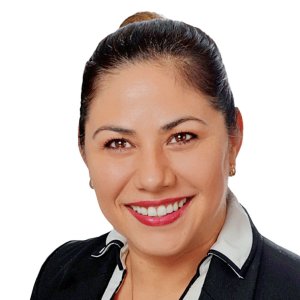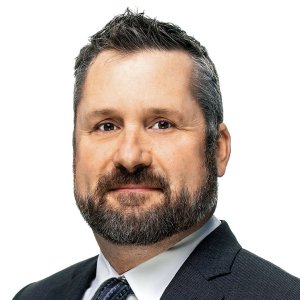Good Business Means More Women in Mining

STORY INLINE POST
As traditionally male-dominated industries have moved closer to gender parity over the last hundred years, mining continues to struggle to attract and retain women, both in the field and in corporate leadership. In my role as Director of Minerals & Metals at our growing Tucson office, I make sure to try and change the status quo deliberately and consistently.
It was after delivering a major EPCM project in Mexico that I became acutely aware of the distinct difference in the number of female colleagues and senior leaders in the US mining industry. I looked at what we were doing stateside and it wasn't even close to the number of women in mining in Mexico. That lodged into my psyche as something I care about and something I would work to change.
Without gender parity, we miss out on a considerable competitive advantage. A diverse workforce – whether in the project delivery team or in the C-Suite – has been shown to improve company culture, performance and returns.
Women bring a different perspective and this is very important. I find women tend to be more organized and more detail-oriented than men, and I believe it's imperative to have a balance of both men and women in any situation bringing forward their ideas.
This isn’t just a hunch; research backs this up. A recent study by mining giant BHP showed that teams comprising both men and women were more productive, more engaged and operated more safely. Diverse teams delivered an average 67 percent lower Total Recordable Injury Frequency and saw company culture improve, with a 21 percent greater sense of company pride. Similarly, research from McKinsey has shown that companies with a critical mass of women executives are more likely to earn above-average profitability.
So, Where Are the Women?
In mining specifically, much of the problem stems from a lack of women in the educational streams leading to mining careers, both in the labor force and in leadership. Engineering schools are only now seeing female enrollment approach the levels of male students but that progress is considerably slower in the fields of engineering that feed mining specifically. Process and mining engineers still skew overwhelmingly male, with very small female representation in organizations like the Society for Mining, Metallurgy, and Exploration (SME).
Unfortunately, I’ve met very few women in my local SME student chapter. I find this telling. If more women are going into engineering, they're not going into the mining industry.
An engineering background is critical to building credibility as a leader in the industry, so this under-representation at the university level is devastating. In the US especially, we see that mining is becoming much more of a niche industry, further reducing the talent pool from the outset. There are fewer actual mining programs available today than in the past – probably less than 20.
And Then Women Leave
Retention is also a significant challenge, with women leaving engineering and mining at a higher rate than men on average. With a lack of community and mentorship within their organization, many women see little opportunity to build their skills and progress with their male counterparts. Lingering inequalities in salaries and promotion opportunities soon have them looking outside the industry for advancement. In addition, if support and flexible hours for parents and caregivers (predominantly women) are not available, burnout and downshifting of careers occurs.
What Can We Do?
Other countries may be further along the path to diversity and we can learn from the organizations that have seen their numbers improve. Mentorship is critical to retaining talent and can help build a sense of community in an industry that still skews strongly male. The more women in a company who can support and encourage the women around them, the more women feel like they belong.
Attracting female talent early in their careers remains the biggest opportunity. At Ausenco, we start building relationships with female candidates while they’re still in university – through co-ops, internships and other work placements. Our Women at Ausenco employee resource group was established to raise the visibility of women across the organization, including networking communities and mentoring. It strives to amplify the profile of women in the organization, foster connections among women from different regions, and help women expand their impact.
I am encouraged to see things changing, especially as I look at my counterparts at the director and vice president level; it's getting more and more diverse. We still have a ways to go but I think that's the “trickle up” you'll see. Those are our next C-Suite people.
Opening Up
Broadening opportunities means actively looking for female candidates for positions outside of the typical female roles. And often change is led by a trailblazer.
An Australian friend of mine worked as a blast engineer in Indonesia. She was only one of five women out of 2,000 operators on site. She helped set a precedent and is leading the way for other women by showing everyone that this is a job that both women and men can do.
Another strategy is to look outside the industry for people early in their careers who can transition their skills from a similar industry to mining. My latest hire was a project engineer from the construction industry where she'd been in oil and gas. I believe there are always opportunities to work with people from other industries and retool their skill sets if they are interested and see a rewarding career in their future.
There is still a lot of work to be done before we see parity. I still find myself in meetings full of men. But this only serves to remind me of the changes we need to make because it is the right thing to do. It is wrong to gate-keep an entire industry away from 50 percent of the potential workforce.
One of the things we talk about at Ausenco is “Finding A Better Way.” Women are going to get to that better way a little bit differently than a male mindset would. And that’s exactly what we need as a company and as an industry.








 By Jim Norine | Vice President of Minerals and Metals, Southwestern USA -
Tue, 04/12/2022 - 14:00
By Jim Norine | Vice President of Minerals and Metals, Southwestern USA -
Tue, 04/12/2022 - 14:00















